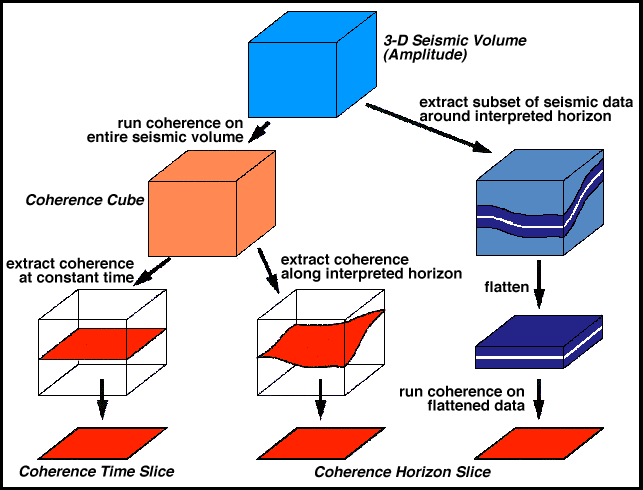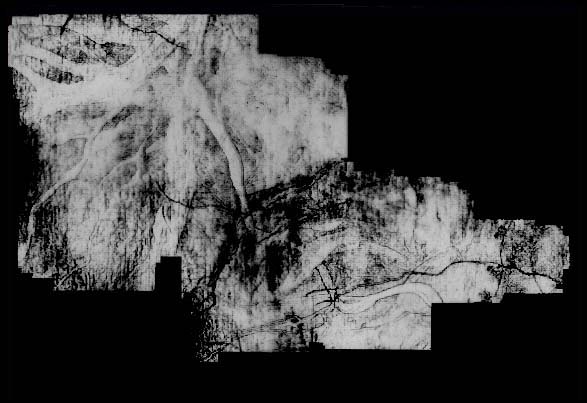What is the best way to view coherence?--Time Slices vs. Horizon Slices
Methods for obtaining a coherence slice from a 3-D seismic volume

Schematic representation of three methods for obtaining a coherence slice from a seismic volume. Coherence may be calculated for the entire seismic volume and then a slice extracted from the coherence volume at either a constant two-way time or along an interpreted horizon. Alternately, a coherence horizon slice may be calculated from a subset of the seismic volume which has been flattened on the interpreted horizon prior to calculation of coherence.
Gulf of Mexico: South Marsh Island
Seismic Time Slice

Time slice at 1200 ms through a time-migrated seismic amplitude spec data volume acquired and processed by Geco-Prakla in the South Marsh Island area of the Gulf of Mexico.
Coherence Time Slice

Coherence was calculated for the entire South Marsh Island seismic data volume and a time slice extracted at 1200 ms. This coherence time slice has no interpretational bias and clearly delineates faults and channels within a Pleistocene paleo-Mississippi delta, as well as an incoherent salt dome in the lower left corner of the survey.
Coherence Horizon Slice*--Delta 1 horizon (refined interpretation)
*data flattened on interpreted horizon prior to coherence calculation

Coherence horizon slice calculated from a seismic volume flattened on the interpreted "delta 1" horizon. This slice is at approximately the same level as the time slice in the previous slide. Note that the channels within the delta are much more clearly imaged in the horizon slice than in the time slice; however, faults are more poorly imaged on the horizon slice than on the time slice. Also, the horizon slice has a smaller areal extent.
Coherence Horizon Slice*--Delta 1 horizon (early interpretation)
*data flattened on interpreted horizon prior to coherence calculation

Coherence horizon slice calculated from a flattened seismic volume using an earlier interpretation of the "delta 1" horizon. The quality of the coherence image has been affected by picking errors, as is evidenced by the grid of black lines running through the image.
Time slice
| Advantages |  |
Disadvantages |
|---|---|---|
|
 |
|
Horizon slice
| Advantages |  |
Disadvantages |
|---|---|---|
|
 |
|
When to use...
- time slices
- reconnaissance work
- structural mapping
- horizon slices
- detailed reservoir-level analyses
- stratigraphic analyses in areas of strong regional dip